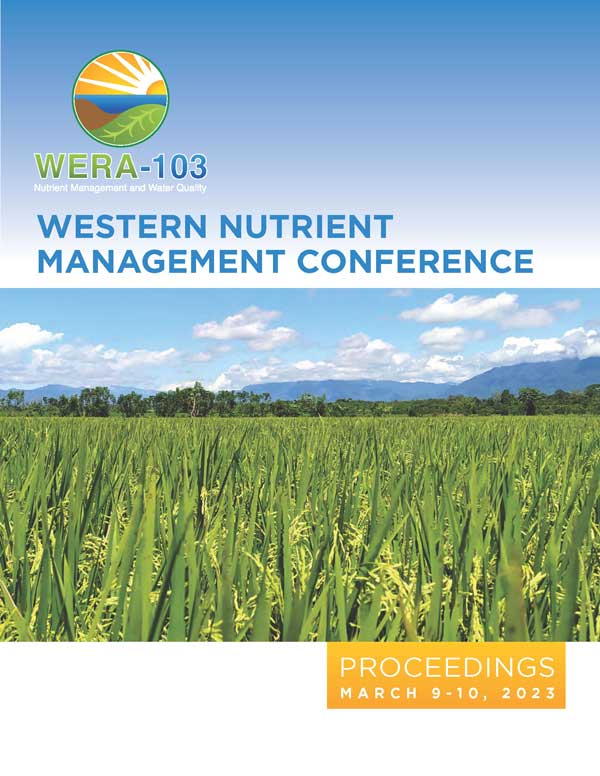Download the Conference Proceedings
Proceedings
Authors
| Filter results3 paper(s) found. |
|---|
1. Alfalfa Contributes More Nitrogen to Following Crop Than Previously ThoughtAlfalfa in high-yielding environments fixes significant amounts of atmospheric N2, a portion of which benefits succeeding non-legume crops and reduces fertilizer N requirement by an amount sometimes called the “legume N credit”. Field research-based estimates of the legume N credit in California and other irrigated, semi-arid or arid environments are sparse in the literature. We conducted replicated plot experiments at three field station sites in California using wheat as an indicator... S. Pettygrove, E. Lin, D. Putnam, M. Lundy, S. Orloff, S. Wright |
2. Improved Small Grain Nitrogen Use Efficiency with California Site-specific Decision SupportSmall grains are grown throughout the state of California (CA) on approximately 500,000 acres annually. They are generally fall-sown and grown during the winter months when most precipitation occurs. Because precipitation and irrigation patterns vary across CA and there is a strong interaction between total water and plant available nitrogen (N), determining fertilizer N application recommendations is particularly challenging in this cropping system. With recent fertilizer price volatility,... N. Clark, M. Lundy, T. Nelsen, M. Leinfelder-miles, S. Light, G. Galdi, T. Getts, K. Mathesius |
3. Biosolids-based Fertilizers as a Nitrogen Source in California Small Grains SystemsSituation/ conditions In response to regulatory and economic pressure, California growers are becoming more familiar with nitrogen budgets. In addition to seeking out ways to improve nitrogen management strategies, growers can possibly benefit by incorporating alternative sources of nitrogen to feed their crops. Liquid injected or pelletized biosolids-based fertilizers from local waste streams and processing facilities are one source that growers are beginning to explore. As... K. Mathesius, D. Geisseler, M. Savidge, M. Lundy, T. Nelson, N. Andersen |
